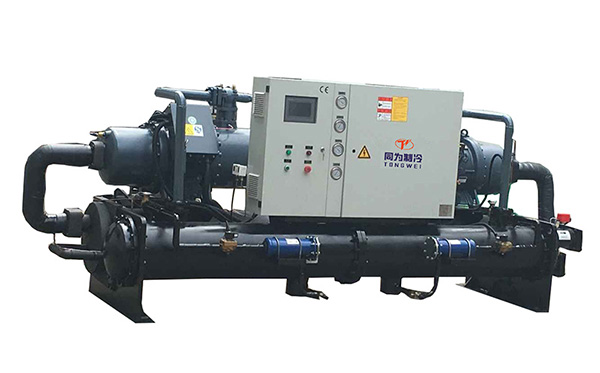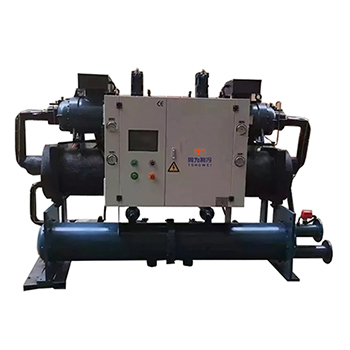Wastewater treatment is an important process to ensure the safe discharge of water back into the environment. An important aspect of wastewater treatment is the use of chillers to cool the water prior to treatment. In this article, we’ll take a closer look at how wastewater treatment coolers work and why they are important in the treatment process.
What is A Wastewater Treatment Chiller?
A wastewater treatment chiller is a specialized refrigeration machine used in inwastewater treatment plants.They play a vital role in maintaining optimal temperatures in wastewater treatment processes. Wastewater treatment chillers work by removing heat from the water or other fluids used in the process.
Wastewater Treatment Chiller
2.How Wastewater Treatment Chillers Work?
Wastewater treatment chillers work by cooling the water being treated. Chillers remove heat from the water, which helps slow the growth of bacteria and other microorganisms in the water. This makes it easier to treat the water and remove any contaminants.
The wastewater treatment chiller uses a refrigeration cycle to remove heat from the water. The refrigeration cycle works by compressing the refrigerant gas, causing it to become hotter. The hot gas then flows through a condenser where it releases heat and turns into a liquid. The liquid refrigerant then flows through an expansion valve, causing it to cool and turn back into a gas. The cold gas then flows through the evaporator, where it absorbs heat from the water and turns into a liquid. This cycle continues to remove heat from the water.
3.Why Wastewater Treatment Chillers Are So Important?
Wastewater treatment chillers are important because they help ensure that the water being treated is at the appropriate temperature for effective treatment. If the water is too hot, bacteria and other microorganisms can grow too quickly, making it more difficult to treat the water effectively. By cooling the water, wastewater treatment chillers can more easily remove contaminants and ensure the water is safely released back into the environment.
In addition to making wastewater treatment more efficient, chillers can help reduce energy costs. By cooling the water before treatment, less energy is required to effectively treat the water. our water-cooled chillers are designed to be extremely energy efficient, which helps reduce the operating costs of wastewater treatment facilities.
4.What’s the Difference Between Air-cooled & Water-cooled Wastewater Treatment Chillers?
There are two types of Wastewater Treatment chiller: one is air-cooled Wastewater Treatment chiller ,the other is water-cooled Wastewater Treatment chiller ;
Air-cooled Wastewater Treatment chillers use ambient air to dissipate heat from the brewing processes. They are energy-efficient, space-saving, and less maintenance that helps save money.
Water-cooled Wastewater Treatment chillers use water from an external water cooling tower to dissipate heat from the brewing processes. These systems are longer lifespan, Relatively quiet, and more consistent cooling performance than the air-cooled Wastewater Treatment chiller.
5.What is the Difference Between Wastewater Treatment Scroll Chiller and Wastewater TreatmentScrew Chiller?
Wastewater Treatment Scroll Chiller Wastewater Treatment Screw Chiller
▪1/2 HP-60HP(2KW-170KW) Above 60HP(Above 170KW)
▪ Danfoss/Panasonic Scroll Compressor Hanbell/Bitzer Screw compressor
▪Built with water tank and water pump Without water tank and water pump
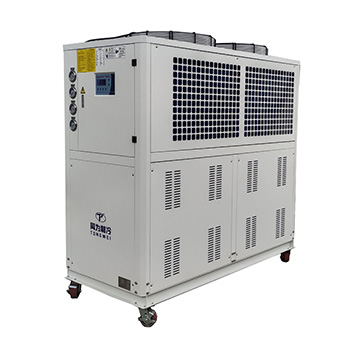
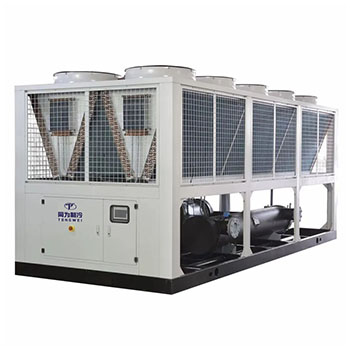
Air-cooled Wastewater Treatment Scroll Chiller Air-cooled Wastewater Treatment Screw Chiller
Water-cooled Wastewater Treatment Scroll Chiller Water-cooled Wastewater Treatment Screw Chiller
6.What Are The Main Components of Wastewater Treatment Chillers?
6.1 Compressor
The compressor is the key mover in water chiller because it produces pressure variations to stir the refrigerant around.
From 1/2HP(1/2 Ton) to 60HP(5oTon) Wastewater Treatment chiller , which is with Panasonic or Danfoss brand Scroll compressor ,
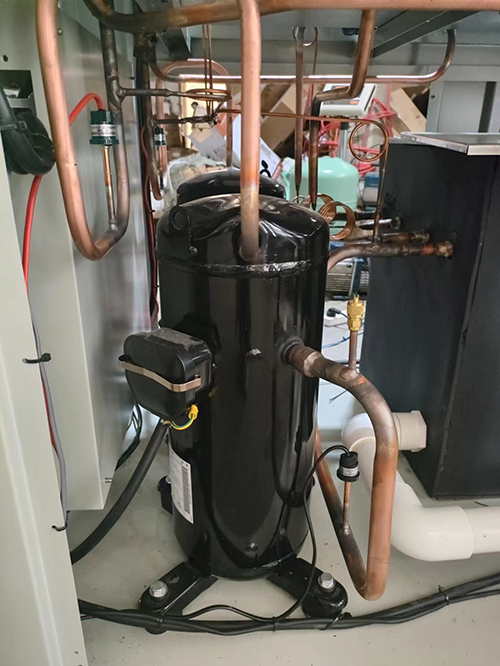 Panasonic Compressor
Panasonic Compressor
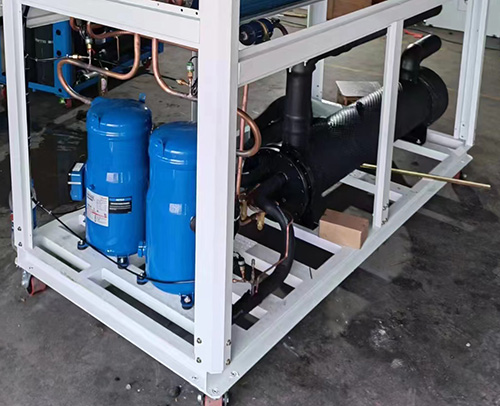
Danfoss Compressor
6.2 Evaporator
The evaporator is a crucial component of air-cooled water chiller, as it is responsible for extracting heat from the liquid being cooled,it is located between the compressor and the expansion valve. There are three types of evaporators : coil in water tank evaporator , shell and tube evaporator, 304SS stainless steel plate type evaporator.
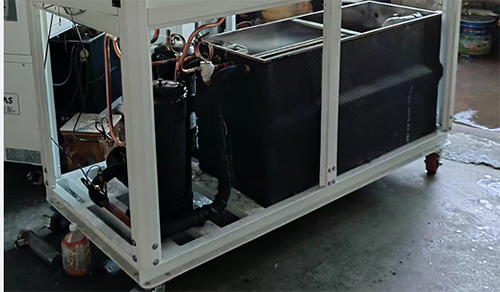 Coil in SS Water Tank Evaporator
Coil in SS Water Tank Evaporator
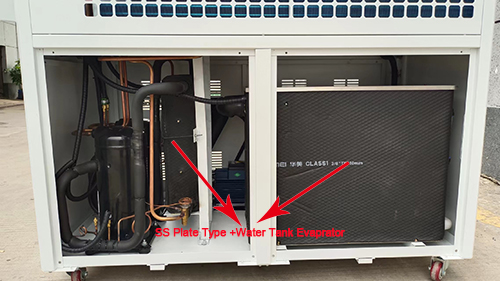
SS Plate Type+ Water Tank Evaporator
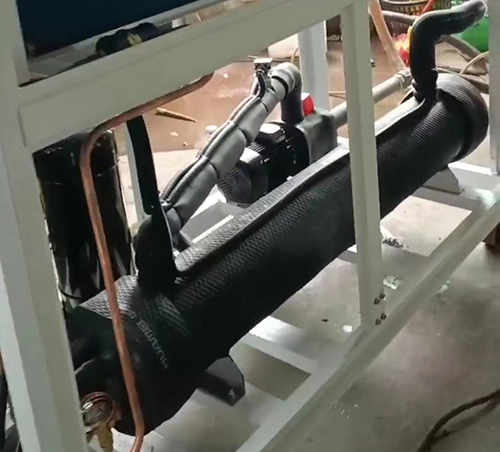 Shell and Tube Evaporator
Shell and Tube Evaporator
6.3 Water Pump
The water pump is designed to increase the pressure and the flow of the chilled water in a closed space.

Water Pump

High Pressure Water Pump
6.4 Condenser
The condenser for air-cooled Wastewater Treatment cooler is equipped with efficient cross-seam fins and female threaded copper tubes for high heat exchange efficiency and good stability.Its function is to cool down the refrigerant steam released from the compressor into a liquid or gas-liquid mixture.
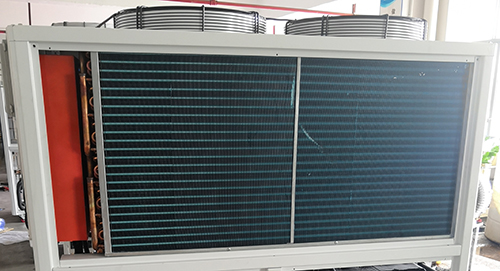
Aluminum fin+fan Condenser for air -cooled Wastewater Treatment chiller
The condenser for water-cooled Wastewater Treatment cooler is shell and tube ,with the internal copper tubes employing an outer thread embossing process.This design effectively enhances the heat exchange efficiency between the refrigerant and water during the process. Compared to traditional smooth copper tubes, the outer thread embossing process increases the surface area of the copper tubes, thereby expanding the contact area for heat exchange and improving the thermal conductivity of the condenser. This optimization design allows the condenser of the water-cooled chiller to transfer heat from the refrigerant to the water more rapidly and consistently, enabling the water to carry away the heat.
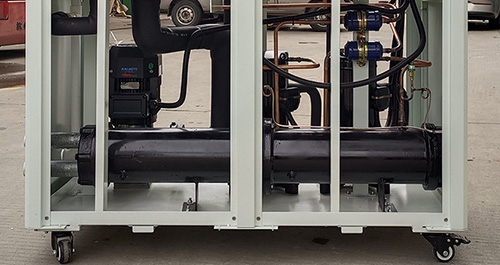
Shell and tube Condenser for water-cooled waterjet cuttting chiller
6.5 Controller Panel
Water chillers use precision digital temperature controller, it RS485 communication port,which can do remote monitoring and control. Simple operation, low failure rate, high safety factor, easy installation.
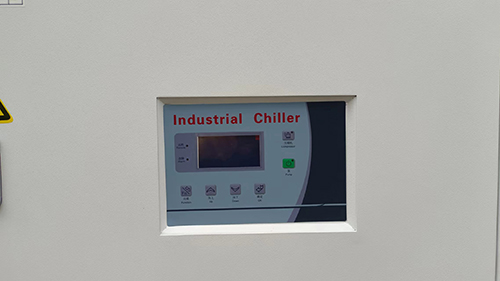
Controller Panel
7.How to Choose Right Chiller for Your Wastewater Treatment Process?
How to calculate right cooling capacity for your Wastewater Treatment chillers?
One of the most frequently ask about how we can know the cooling capacity for chillers.
The range of a chiller at which it can discharge heat from a heated fluid is called cooling capacity.
The cooling capacity of a laser Chiller ranges from 1/2KW to 100KW.
Let’s see the below formula.
Cooling Capacity(kw)= Flow Rate(m3/h)*Temp Change(T1-T2)/0.86
Heat Load= C(specific heat)* M(quality output per hour )*Temp Change(T1-T2)
Oversize the chiller by 20% Ideal Size in KW = KW x 1.2
Noted : T1:Incoming Water Temperature (℃) T2:Required Chilled Water Temperature(℃)
For example, what size of chiller is required to cool 5m³ water from 25°c to 15 °c in 1 hour?
Temperature Differential = 25℃-15℃=10℃
Water Flow Rate = 5 m³/hour
Cooling Capacity in KW = 5 x 10 ÷ 0.86 = 58,14 KW
Oversize the chiller = 58.14 x 1.2 = 69.76 KW
69.96kw cooling capacity for chiller is required.
Types of Wastewater Treatmentchiller system?
There are two types of chiller :Air Cooled Wastewater Treatment Chiller and Water Cooled Wastewater Treatment Chiller.
Water cooled chiller needs a separated water cooling tower and water cooling pump ,if you don‘t have exsiting water cooling tower,we suggest you use air cooled chiller; But if your ambiemt temperature is very high above 55℃ ,we suggest you use water cooled chiller , as it is easier to dissipate heat for water cooled chiller with water cooling tower.
Cooling capacity unit conversion?
1 KW=860 kcal/h ;
1 TON=3.517 KW;
1 KW=3412 Btu/h;
8.Contact Us to Learn More About Our Wastewater Treatment Chillers
We engineer and produce high-quality process chillers compatible with a broad range of industrial processes.
Depending on your needs, we also offer custom chillers to ensure that each client receives the industrial chiller best suited to their unique process.
Request a quote now on our Wastewater Treatment water chillers or learn about the other air-cooled chillers and water-cooled chillers.



















